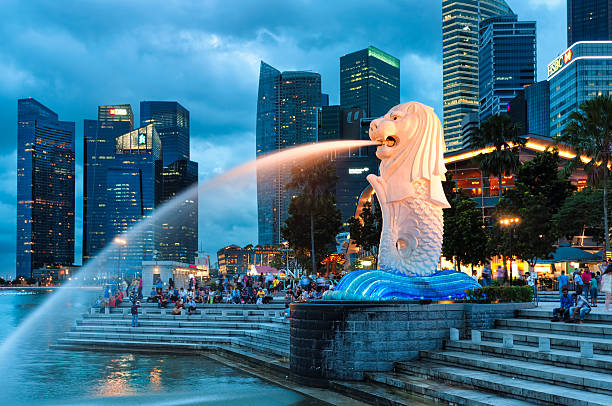An Evidence of Walking in a Neighborhood Living on Flavor and Tradition
Your senses are assailed the moment you step into little india in singapore. There is a heady spice and incense in the air. The music of stores is played louder than one might want to hear. Store windows are filled with gold bangles, and along the surrounding walls are murals vying to get your attention. One gets a chaotic feeling, but somehow it’s comforting. This is not the would-be silent neighborhood. It is raw, audacious, and full of stories on either side.
Stories in The Street
The artery of this quarter is Serangoon Road. Tuk-tuks honk, sellers dump vegetables, and shops pour into the street with no excuses. It is new every step you take–garlands of marigolds to make temple offerings, soundtracks of Bollywood wafting out of CD stores, and racks of saris in garlands of neon lights. There are so many festivals at one time.
Tekka Centre, Food Haven and Market
At Tekka Centre you will see extremes conjoined. On one hand, there are the stalls of wet markets, where aunties purchase spices, fish and mutton. The air is moist and is filled with turmeric, chili and coriander aromas. Stairs, the hawkers’ stalls are roaring and roar with pans and ladles. Curries ferment, dosas sizzle, and biryani is dolled out onto metal hotpans more quickly than you can hit your blink button. It is a food enthusiast’s playground, yet a regular stop of the locavores.
Temples Which Hold the Community Fast
In this noise, temples act like an anchor. They are also ornate structures with towers crammed full of bright statues of gods, goddesses and beasties of myth. These shrines are not only tourist attractions at which people pose to take photos, but they are living, breathing elements of the neighborhood.
Temple of Sri Veeramakaliamman: A Blast of Colour
This temple is devoted to Kali, the goddess whose gaze in pictures is traditionally fierce and filled with the buzz of piety. Flowers and coconuts are heaped outside gates of offerings. The allegedly hypnotic chanting is to be punctuated by the ringing of bells. To outsiders, the setting seems to be too much at first but take it a few minutes and there is some rhythm which draws you in.
Sri Srinivasa Perumal Temple–Rituals and Processions
A second place of interest is Sri Srinivasa Perumal Temple, where colorful proximities over-wash the lanes. There are events when processions are along the road and the air is vibrating with drumbeats and chanting. It is a visit that reminds you even after you look back.
Tastes of the Neighborhood
Little India speaks with food. There are restaurants and hawker stalls as well as sweet shops that want your attention. Coming to eat here is not only about satisfying your belly; it is a dive into culture.
Banana Leaf Feasts
It is somehow liberating to have a meal on a banana leaf. He heaps up rice in the middle and ladles all around it curries, pickles and vegetables. You can add fried fish or chicken, but the vegetarian set alone will render you dazed and satisfied. By using your hands to eat, the meal feels weirdly intimate–you reach some part of the food that spoon and fork will never get you to.
Street Snacks: Grab, Bite, Go
Samosas of spiced potatoes, vadai crisp outside and mushy inside, and dosas stretched paper-thin and filled with masala. The snacks are ubiquitous, and they are lethally addictive. You go into your head and say that it is only one, and then you find that you reach out to take another.
Sweet Shops–Sugar Rush Guaranteed
Down the rows of glossily colored sweets, you are beckoned by racks behind the glass counters. Ghee-filled laddoos, jalebi deep-fried and twisted into golden strands and soaked in syrup, and gulab jamun sweet and slurped in lashings of sugar. Although you may be already full, these snacks say to you, “Try me.” But it is not possible to fight it.
Festivals That Change the Streets
Little India is a lively place throughout the year, but the celebrations make it something amazing.
Deepavali or Festival of Lights
Streets have arches of lights. Stores are piled with candies, fast food, and ornate lamps. Families are purchasing clothes, markets are getting crowded, and the whole district is filled with excitement. The strolling of the main road is like the entry into a traditionally driven carnival.
One Procession Unique: Thaipusam
Thousands attend this festival. In walking in devotion, the followers have ornate kavadis, which they are displaying on their shoulders, or surviving the injections on their bodies. It is hard-hitting and emotional, and it is something you will not just come across by chance anywhere. Invariably, tourists will stand and gape, with cameras at the ready, but even they can feel the gravitas of what goes on display.
Stores Bling and Sparkle
Textile stores present materials in colors you would have never thought of. Mocking reds, dark blues, glitzy golds–the whole lot piled to the rafters. Jewel shops are all along the streets, with each one competing to outdo the other with piles and piles of bangles, necklaces and rings. You don’t always need to make purchases; the very journey is theatrical.
Street Art, Murals
Walls speak besides the temples and the shops. Mural paintings are shown as dancers, markets, and culture. They are a kind of reminder of heritage, boldly colored. And they are also great photo backgrounds, but standing in front of them to admire them gives you a feeling of how art supports the history being discussed in contemporary forms.
Tips on Visiting
Go hungry. You will not enjoy coming full.
Enter the temples with respect–take off your shoes, wear decently and observe before you make moves.
Bring cash. Smaller stalls will not accept cards.
Make a day visit and a nocturnal visit. Markets during the day depict day-to-day life, and evenings are brightened by lights and street vibes.
Don’t rush. The community pays off its inhabitants who dwell there.











